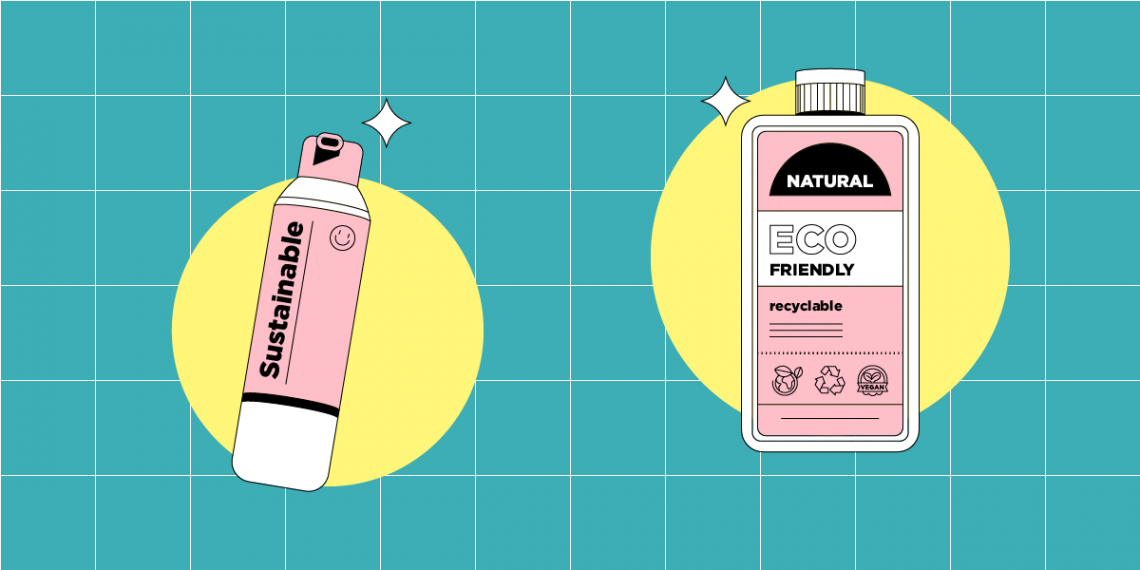We all use it, on a daily basis, in large amounts. It has become a big part of our lives and is all around us. Plastic, the “super” material we just cannot seem to live without. On the other hand, soon we won’t be able to live because of it either. It takes from 20 to 1000 years for plastic to break up into smaller pieces, and when it does eventually, it breaks down into polymers and toxic chemicals. Around 40% of produced plastic ends up in landfills taking up valuable space, and from 10 to 20 million tons of plastic are dumped into oceans every year, causing over 100,000 of sea-life deaths. It has become a necessity to seek innovative ways of producing plastic and recycling it in a more environmentally friendly way.
Here are some of the genius ideas that might inspire you, and find their way into your everyday lives and businesses:
Biodegradable plastic bags, straws, plates and takeaway boxes made out of plants
Over 500 billion disposable bags are used every year, equating to approximately 150 bags per person, annually. And this is without even considering other plastic products such as plates, boxes and utensils we use all the time. Avani has developed a 100% biodegradable and 100% compostable bag out of cassava starch, the only one that has passed the toxicity test. The bag simply dissolves in warm water, and you could just simply drink it without worrying because it is harmless. This not only means less plastic waste to take up space and stay there for a few centuries but also a safer environment for all living creatures. Avani also produces straws, but instead of petroleum-based plastic, they use corn starch and vegetable oils. And for all of you who like takeaway or are in need of those Styrofoam takeaway boxes and containers, Avani has something for you as well. Their compostable boxes made out of sugar cane waste need about 180 days to compost. This is certainly an innovative twist on plastic production; keeping functionalities and going green at the same time.
Mushrooms and fungi-building blocks of eco plastic as well as plastic eaters
The next great innovation, when it comes to plastic production, is the usage of fungal or mushroom roots, or to be more exact mycelium. It is the building block of mushrooms that acts like cement. It is a great ecological building material that grows, self-assembles and binds, and can be considered as a living polymer. Mycelium is mixed with agricultural waste, placed into molds to grow into a certain shape and then dried out when it’s ready so that spores or mushrooms can no longer grow. The company Evocative has developed this great technology and uses it to produce packaging material and building insulation. It is a great cost-competitive alternative to crude oil-based plastics and is compostable and eco-friendly.
Another team of researchers at the University of Utrecht is working on similar technology, using mycelium as the building block. They have already developed multiple materials using the technology, from rubber-like materials with flexibility, to plastic-like and leather-like ones. The main idea is to replace oil-based plastics with fungi.
Unlike the previously mentioned technology that uses mycelium as a building block to create a substitute for plastics, the team of researchers from the University of Utrecht has also found a way for fungi to not only digest plastic, but make it edible. A culinary delight one might say. The plastic is first treated with UV light so that the degradation process can start faster. Then it is inserted into specially designed agar shapes. Agar is a kind of seaweed that provides fungi with adequate nutrients. Once the fungi are added, magic happens. Mycelium grows over the agar jelly-like body. It takes a couple of weeks for the whole process to be finished. The end product can be served however you desire. Yummy!
Zero electricity plastic bottle cooling system
Approximately 9.2 billion tons of plastic has been produced until today and, from that, around 6.9 billion tons are now waste. An even bigger concern is that 6.3 billion tons from that waste never got recycled. If we only look at plastic bottles about 1 million of them are produced every minute, around 20.000 are bought every second worldwide, and most end up in landfills or oceans with just a 10% recycle rate. It is more than obvious that we must find a lot of innovative ways to use some of this plastic waste and turn it into something useful. One ingenious idea is the cooling system made out of plastic bottles. Zero electricity, just plastic bottles! So how does it work? If you hold your palm in front of you and breathe into it, with your mouth wide open, you will feel warm air coming out. But if you do the same thing, only this time through pursed lips, you will feel cooler air. The principle is the same with plastic bottles. Bottoms of the bottles are cut, and the wider part is left outside so that warm air can flow into them, and go through the narrow part of the bottle. Because of this airflow through the bottleneck, the air gets compressed, cooling the air in the room up to 5°C! This could certainly be a game-changer for underprivileged areas and communities affected by heat waves, and a great way of recycling plastic bottles!
Pothole-free, longer-lasting and stronger roads
Another great use of plastic waste is converting it into plastic pellets, and then mixing them with asphalt mix. There are around 40 million kilometers of roads worldwide, so just imagine the possibilities here! So far one of the main ingredients when building roads is oil, bitumen to be more exact which serves as a binding material for rocks, limestone and sand. Inspired by what he saw in India, where they fill in potholes with plastic and burn them, engineer Toby McCartney got the idea to do something similar, but on an industrial scale. His innovative idea is to build roads not by using bitumen, but by using plastic pellets from waste plastic. Not only is the road stronger, pothole-free, it also lasts longer. With this innovation, we will not only have better roads but also fight the plastic waste problem at the same time. A win-win situation!
Additive for a faster biodegradability and source of sustainable energy
So far, we’ve seen many different but all innovative ways of producing bioplastic and recycling it. Another innovative approach to a more sustainable world is the Biospheres additive. If you are in the business of producing plastics, and virtually anything made out of it, by adding just 1% of the additive in your product will make a huge difference. This additive will help plastic biodegrade faster without compromising any of the characteristics of the product. It works by attracting over 600 different types of microorganisms and makes it easy for them to digest that plastic. The gas that’s being produced from consumed plastic can be further harnessed and converted into sustainable energy. This way, you can not only make your plastic products safer for the environment but could also end up with a sustainable energy source.
Banana waste for biodegradable plastic
Did you know that only about 12% of the banana tree plant is harvested, and everything else is waste? Well most of it, but not anymore! Thanks to a group of researchers from the University of South Wales in Sydney, banana waste can now be used and converted into biodegradable plastic. Pseudo stems of the banana plant consist of about 90% of water. They are chopped, dried at low temperatures, milled into a fine powder and washed with a soft chemical. The end product of this process is nano cellulose which can further be used for making bioplastic. Although in its early stages, this innovative approach of using banana waste and making biodegradable plastic is promising. So far it is quite convenient for making shopping bags and food packaging without the risk of contaminating food. It can be recycled up to 3 times and afterward, once discarded, it will break down. Hopefully, we will see this technology develop more in the future and see what else banana waste holds for us!
These were just some of our picks for great and genius ideas and innovative technologies that all revolve around plastics, the way we use it and discard it. Almost certainly we will come up with more innovative solutions, and maybe find inspiration in some we mentioned. If you are in the business of making plastics or plastic products and have an idea you want to develop, make sure to contact us and make Innovation Cloud your number one partner in your innovation process.






